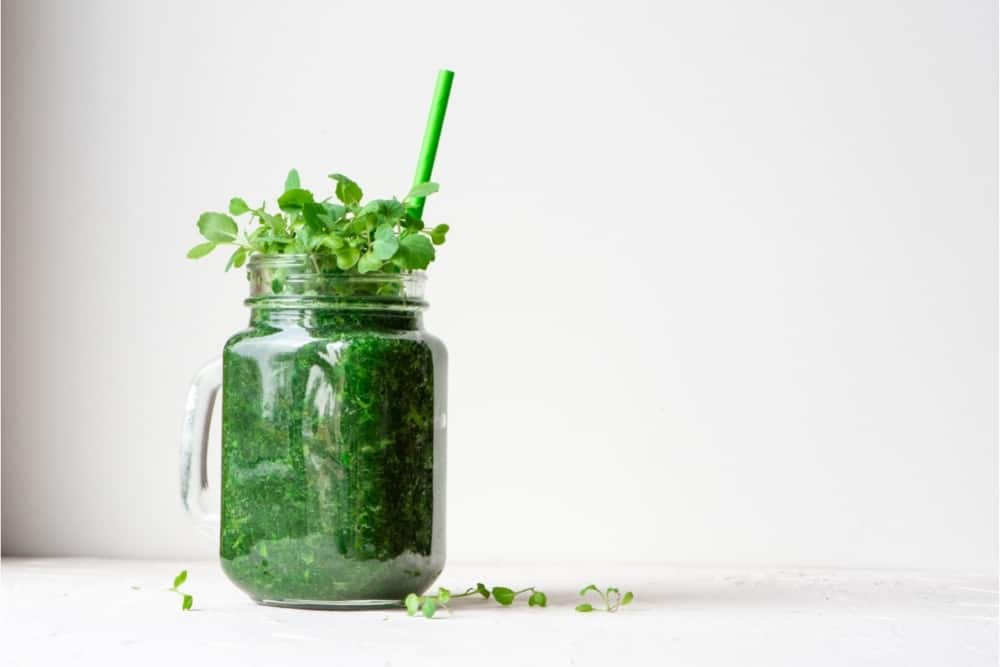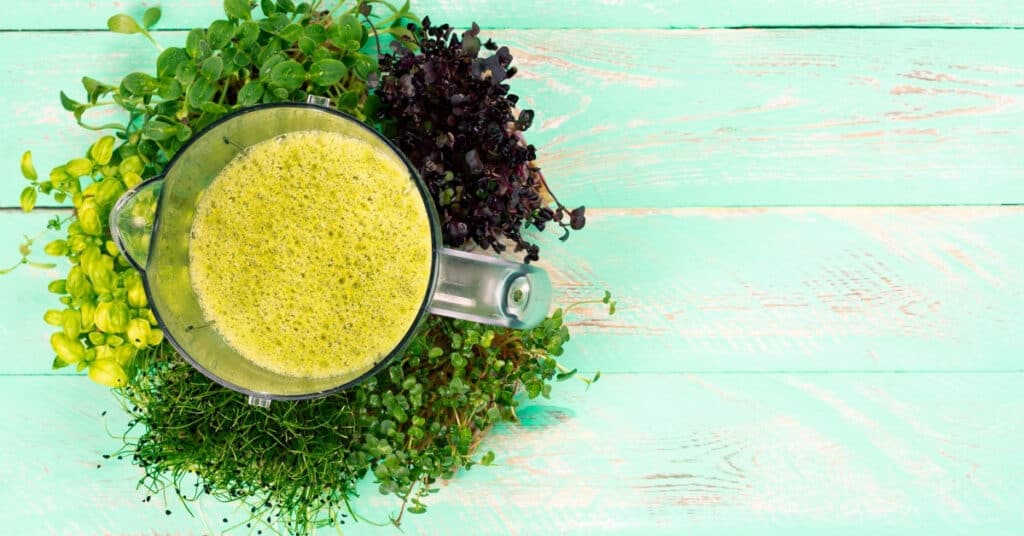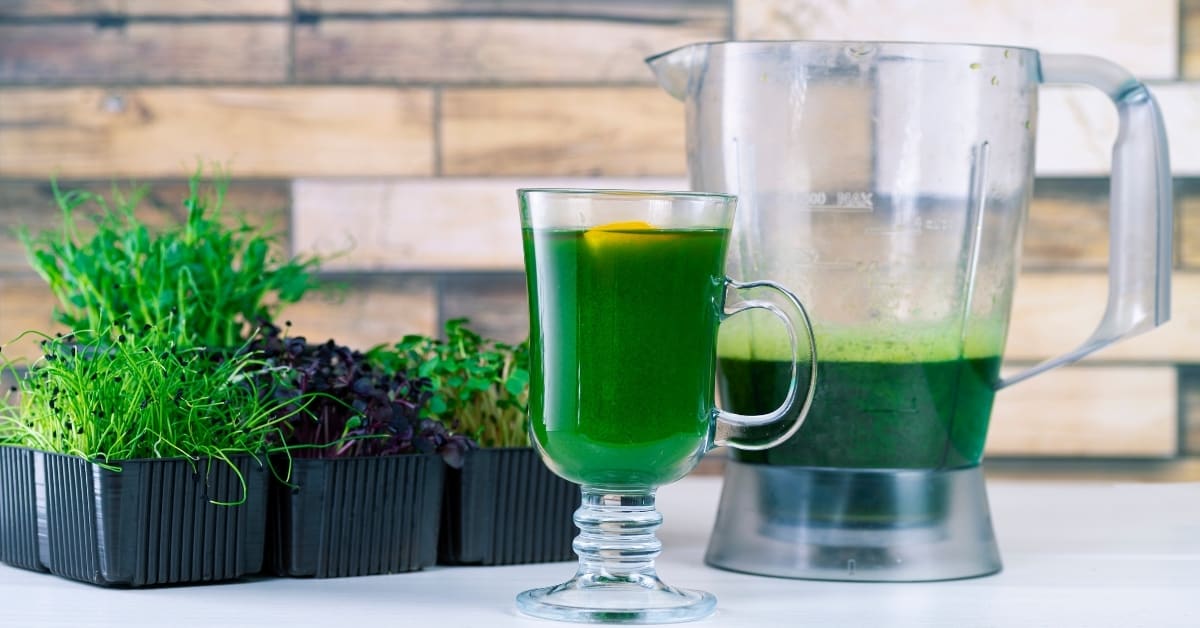In this article, we will show you all authentic facts and figures on “Can You Juice Microgreens?”. Let’s start talking about it!
One of the primary draws of juicing is the ability to obtain more nutrients per ounce compared to eating the equivalent in fruits and vegetables. Juicing is not only richer in vitamins and nutrients but can be easier to consume at a smaller volume. Microgreens contain high levels of nutrients compared to their mature plants and, when juiced, can pack a serious nutrient punch.
Microgreens can be juiced for nutritious additions to one’s diet. Nearly all microgreens are suitable for juicing, so finding ones that satisfy desired nutritional requirements and appeal to taste will depend on your preferences. Microgreens work well as juices and can also be added to smoothies for alternatively beneficial and tasty beverages.
We recommend incorporating microgreens into your diet in any form because of their nutrient-dense properties. Juicing is one of the many beneficial ways that you can consume microgreens, often allowing you to get far more than your daily needs for many vitamins and minerals.
Should You Juice Microgreens?
We like to think of juicing as ‘squeezing out the good stuff.’ It allows you to consume more nutrients per serving while eating far less volume with the bulk of a fruit or vegetable being eliminated. Although microgreens do not have the mass of most fruits and vegetables, juicing them provides you with the nutrients in an easily consumable form and high concentrations.
Let’s first look at the superior nutritional value of microgreens as compared to their mature counterparts. Microgreens can be up to twenty times more nutrient-dense than their mature versions, making microgreens a much more efficient source of important compounds.
Microgreens may be more concentrated in some nutrients than others depending on the variety, but all are excellent sources of potassium, magnesium, iron, zinc, and copper.
Here are some other reasons why you should juice microgreens:
- Easier to consume: Many use microgreens as garnishes or toppings and eat them in small amounts. When you juice them, you can eat more in one sitting. Some microgreens also have exceptionally strong tastes that may not appeal to you. If you juice them with fruits, the sweetness can make it tastier!
- Antioxidant content: Microgreens are also rich in antioxidants, which aid in cell health and restoration. They prevent free radicals from damaging healthy cells and causing the early onset of disease.
- Disease prevention: Consuming microgreens has been linked to lower disease risks, particularly heart disease, and certain forms of cancer.
Given the incredible value found in microgreens, you should consider juicing them but remember to consume in moderation. Like any food, you should be allowing for a balance of nutrients from different sources. It is possible to overconsume single nutrients, which may have adverse side effects.
The most significant disadvantage of juicing is that you eliminate the leftover pulp, which is often a good fiber source. There is not much mass that is left for microgreens, so this is not a primary concern. You should look for alternative sources of fiber when you juice. Fruits and vegetables are only one source of fiber, with grains, legumes, and beans being other great sources.
Is Juicing Microgreens Better Than Eating Fresh?
Juicing and eating microgreens fresh do not have considerable health differences. The only nutritional benefit of juicing is that you can drink more nutrients as they are condensed into juice form. Eating whole microgreens will provide you with more fiber than juicing, but this isn’t too significant.

Because juice is already broken down, it may be easier for your body to absorb the nutrients as well as digest them. Those who don’t like eating produce could benefit from juicing. If fresh microgreens are going to be challenging to incorporate into your diet, juicing is a great solution. Finding ways to sneak them your diet is better than not eating them at all.
If you are worried about not getting all the nutrients from a whole microgreen, you can also consider blending them. Smoothies are a denser way to eat your fruits and vegetables, often serving as a meal in addition to a source of liquid nutrients. As mentioned, these often taste best with fruit for those who aren’t used to drinking their vegetables.
Smoothies will also keep the fiber content present and are just as effective as eating the microgreens whole. You will likely be able to eat them in larger quantities as well when blended. Certain microgreens’ different flavor profiles will pair well with different fruits and veggies for a nutritious and delicious blend.
What is Healthiest to Juice Instead of Microgreens?
While most microgreens can be easily juiced, some mature vegetables and greens serve as excellent alternatives for juicing. These may be easier to get your hands on because of their availability and low cost. You will make significantly more juice with a mature plant than a microgreen and have a substantially less nutritional value per ounce.
We recommend juicing these sources of nutrients because they will provide you with a large portion of recommended daily requirements and be easier to consume in juice form.
These are some of the healthiest vegetables and leafy greens if you cannot access microgreens:
- Kale: It does not have an incredibly harsh flavor, making it easy to pair with other juices. Kale is also one of the most nutrient-dense leafy greens and is exceptionally high in Vitamin A, C, and K. You can also find antioxidants in kale that are necessary for fighting free radicals.
- Spinach: A common addition to smoothies and juices, spinach is rich in Vitamin A, C, and many antioxidants. Nitrates are also present, which are necessary for regulating blood pressure.
- Carrots: Carrot juice is popular because it is sweeter, and people like it by itself. It is also high in potassium, Vitamin A, and biotin. One of their most significant benefits is Vitamin A and its positive impact on skin and eye health.
- Broccoli: You will find broccoli rich in Vitamin A, B6, C, and potassium. However, it is not particularly nutrient-dense, given its larger size.

All of these vegetables can be found in microgreen form! The many nutrient benefits listed for each are founded in much higher concentrations in the early phases of growth. Microgreens are harvested around two to three weeks after planting and often mimic the mature vegetable’s taste. You may be surprised to find that carrot microgreens taste nearly the same as the real thing!
Juicing Microgreens
Juicing microgreens is very similar to juicing other fruits and vegetables, so there is little you need to do other than insert the greens into the juicer. You may need to apply a little more force when pushing the greens into the juicer as they are more delicate than other items. You can juice the entire microgreen with stems and all, making them very easy to work with.
If you have the time and energy, we recommend growing microgreens from seed as they are much more cost-effective than store-bought microgreens. You will also be able to have access to a much greater variety. Nearly all vegetables and greens can be found in microgreen form, offering tasty varieties and incredibly nutrient-rich versions of the mature plant.

